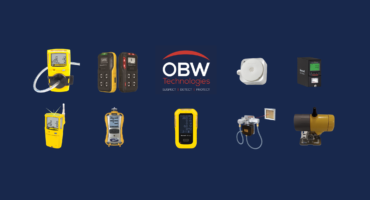Following an accident that occurred in the UK where a flammable vapour was not picked up by their gas detection system. We thought it is a good time to highlight some best practices.
The use of a PID would provide for the early detection within the 10% LEL range of flammable substances that a catalytic or IR sensor may respond poorly to or is in levels within the toxic range.
The RAE Systems PID handbook has an excellent section dealing with Sample Tubing, Filters, and Adsorption Losses, especially when considering most VOCs are flammable gases/vapours.
When a sample is drawn from a distance, the sample tubing can cause a delay in response and losses due to adsorption. Adsorption of VOCs is significant for most types of plastic or rubber tubing, even though such tubing may be supplied with standard confined space entry kits and is adequate for sampling CO, H2S, CH4, and O2.
For VOCs, metal or perfluorinated plastic (Teflon or PTFE, PFA, etc.) tubing is highly recommended. A second choice, polyurethane tubing, is often adequate. The importance of the tubing material choice depends on the length of tubing, the absorbability of the compound and the flowrate.
Ten feet (3 m) of Tygon tubing will completely absorb low-volatility compounds like jet fuels. Several inches of Tygon has no effect on volatiles like benzene or isobutylene; 100 feet (30 m) of Teflon tubing has little effect on isobutylene but does cause enough adsorption to delay the response by a few seconds more than that required to displace the air in the tubing.
For very high molecular weight compounds, even the inlet probe and sensor block can cause enough adsorption to affect the readings. Typically, compounds with a boiling point above about 300°C are not possible to measure quantitatively with most portable PIDs, unless the entire system is heated. For example, MDI, an isocyanate used in polymer manufacturing, has a boiling point of about 370°C. On a MiniRAE 3000 or ppbRAE, its response time to full response is very slow (>15 minutes), but these instruments have proven useful for detecting leaks on heated MDI pipelines.
The effect of adsorption losses can be reduced by setting the instrument to the highest flow rate available, thus saturating the adsorption capacity more quickly. In addition, removing filters may reduce adsorption. Some PIDs use filters made of cellulose or other materials that can absorb or react with some chemicals. For example, cellulose reacts with hexamethyldisilazane and acyl chlorides, making these compounds difficult or impossible to measure quantitatively with the filters in place. Removing the filters usually is at the cost of shortening the pump life or more frequent lamp cleanings, but it may be necessary for proper measurement.
From the Blog



If you have any questions about our products or services, please feel free to contact us.

Join our mailing list to receive the latest news and updates from our team.